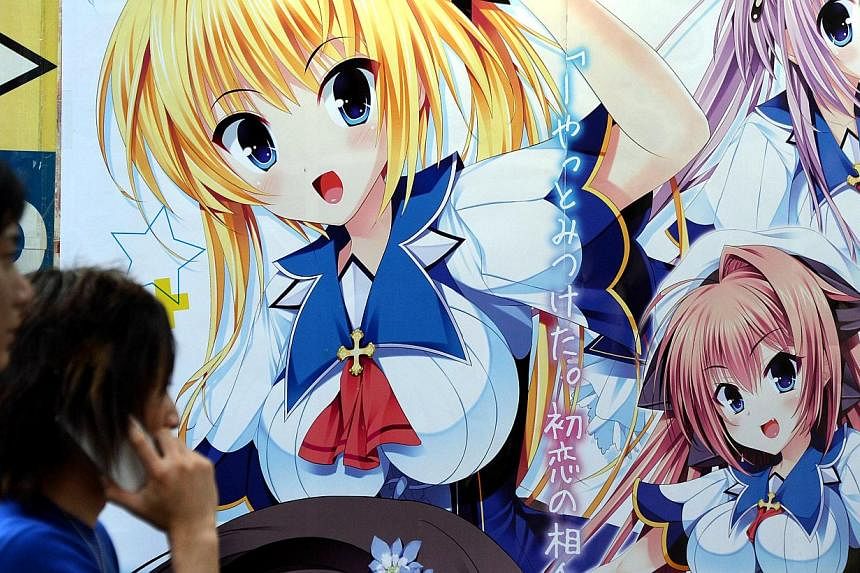Nearly two months after the Tokyo metropolitan government designated a particular manga publication as "unhealthy" for its explicit sexual content and required bookstores to shelve it in sections for adult magazines to protect children, similar publications are being widely displayed by bookstores in their sections for ordinary magazines.
The designation of the manga as unhealthy was the first of its kind and was meant to limit access to the comic book to people 18 years old and above. It was based on the revised Ordinance for the Sound Development of Youth and cited the explicit images of sexual acts in the manga.
One reason similar manga continue to be displayed among ordinary magazines, a Tokyo government official said, is that it is important to protect freedom of expression. Another reason is that some manga are designed to get around the ordinance.
At a large Tokyo bookstore, manga that show young girls with fully developed breasts or women in explicit poses on the covers are displayed alongside ordinary manga. Some have provocative titles.
When a senior member of the Tokyo public middle school parent-teacher association (PTA) conference visited the bookstore last month, he was shocked at the sight, saying: "They're sold the same way that regular comics are."
The metropolitan government applied the new criteria to major publisher Kadokawa's manga Imoto Paradaisu! 2 (Sister Paradise! 2) in May for the first time, and designated it as an unhealthy book.
Booksellers have been required to display the manga in their adult book section since May 16. Before that, it had been on shelves where primary school children could easily access it.
The PTA official said with disappointment: "There are more manga that I think should be displayed separately." The ordinance revised in July 2011 has provided new criteria under which comics can be designated as unhealthy books if incestuous relationships and illegal acts such as rape are unduly praised or emphasised.
Manga containing explicit images of sexual organs and acts were already designated as unhealthy under previous regulations.
In the case of Imoto Paradaisu! 2, the metropolitan government judged that the main character's sexual intercourse with his five younger sisters violated the new criteria.
The Tokyo government analysed why the new criteria had not been applied for about three years since the revised ordinance was enforced, attributing it to the deterrent effect of the revised ordinance. When a comic is designated as an unhealthy book, many bookshops and convenience stores tend to choose not to stock it altogether, rather than have to display it separately.
A person involved with the publishing industry said: "The designation means sales are prohibited." Imoto Paradaisu! 2 was voluntarily recalled and is no longer found in stores.
Mr Shigeru Higuchi, a chief editor at Akita Publishing, said: "Since the ordinance was revised, cartoonists have stopped submitting comics that come close to violating the ordinance."
Last month, more than 100 manga were piled up in a meeting room on the 28th floor of the metropolitan government building. Every month, the metropolitan government buys about 140 books, including newly published manga and monthly magazines.
The publications are scrutinised by six officials of the Office for Youth Affairs and Public Safety to evaluate which books should be reviewed by the Tokyo Metropolitan Council on the Sound Development of Youth.
Other municipalities in Japan including Osaka and Iwate prefectHowever, some manga are said to be designed to elude rules by replacing depictions of sexual organs with fruits, for example.
WASHINGTON POST

